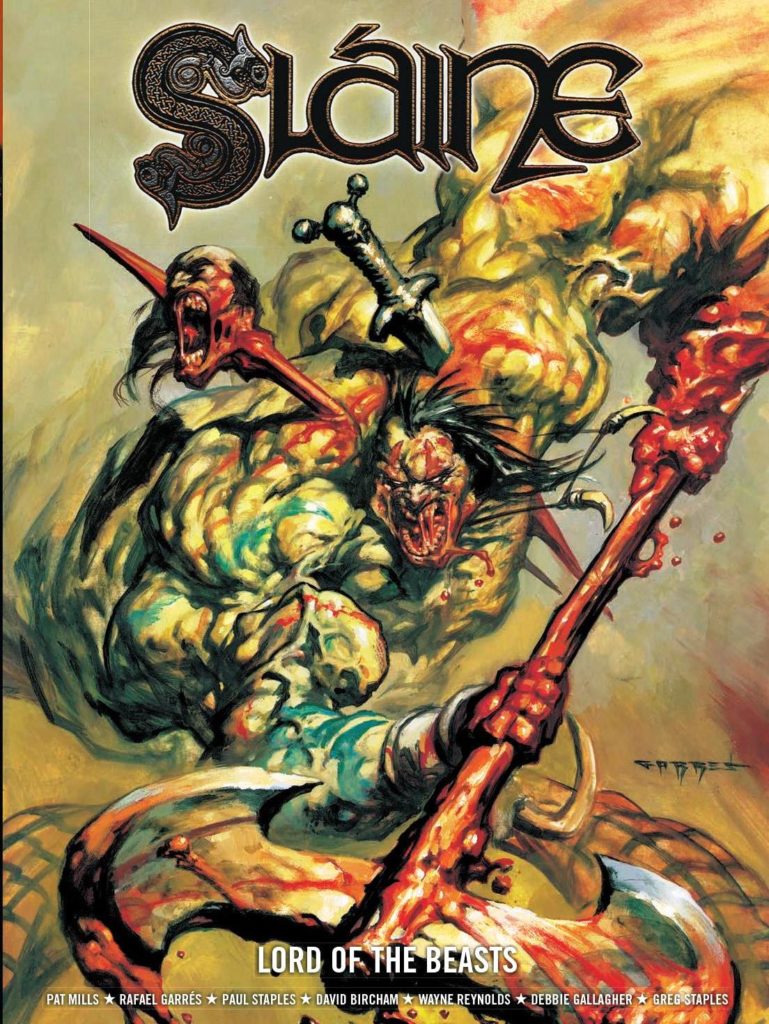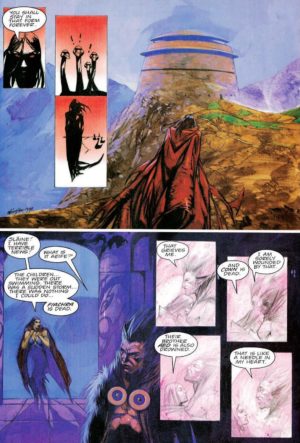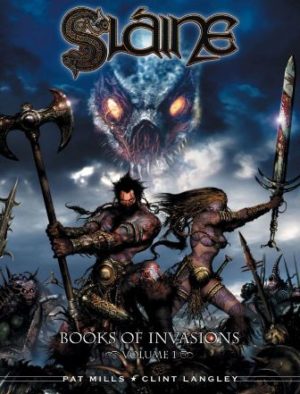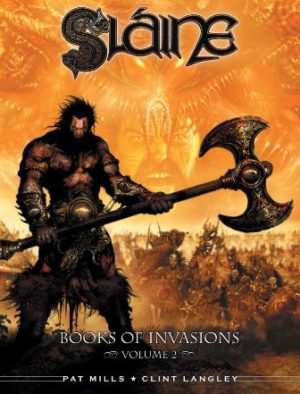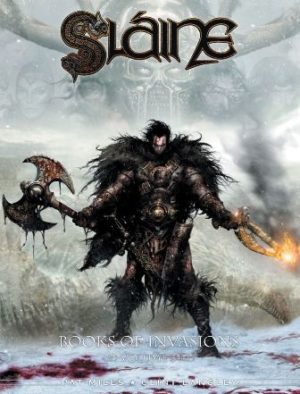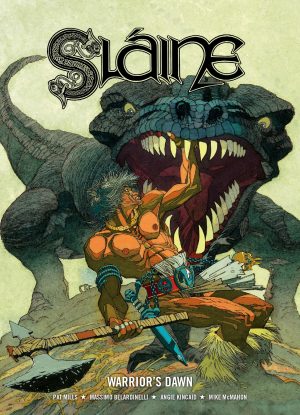Review by Jamie McNeil
The Grail War drew a line for Sláine, and Lord of the Beasts is different, a series of short stories known collectively as ‘The Lost Years’, mostly set during Sláine’s years as High King of Ireland. In a book of little gems, it’s a first for featuring a co-author and a narrator other than Ukko the Dwarf, while also collecting the story that nearly ended the series for good.
‘Lord of the Beasts’ explores what might happen if Sláine became trapped in his warp spasm as told by the druidess Nest, introduced in Time Killer. Neatly plotted by creator Pat Mills, artist Rafael Garres instantly creates a sombre tale, quite beautiful in the way he depicts Niamh’s desperate race to restore Sláine to normal. While the action can be hard to follow Garres’ hideous horror and fantasy style is something to behold.
Debbie Gallagher co-writes two tales about Sláine’s son Kai, unique in demonstrating a different side to Sláine. Paul Staples illustrates events in ‘Kai’, Sláine and Ukko going to meet Kai who is back on holiday from Albion. However the Fomorians are aware of this and plan to capture them. Paul’s simple abstract style reveals Sláine’s softer side and provides funny macabre moments. Of all the artists featured, his style is the most simplistic, though his illustration on ‘Macha’ shows a vast development with extraordinary frames of ponies ridden into a hunt and his characterisations of pernickety druid Cathbad and mischievous Ukko brilliant.
‘The Banishing’ follows ‘Kai’ in a parody of awkward parent-teacher conferences after your usually model student gets caught “experimenting”. Wayne Reynolds provides fine fantasy art accentuating the humour both here and in ‘The Triple Death’. His horror fantasy and action scenes are excellent in a tale where Sláine reflects on his journey while facing down cursed warriors. Also featured is Sláine veteran Greg Staples, rendering detailed gory scenes of Sláine’s vanquished enemies feasting his coming misfortunes in the underworld, and a story inspired by William Tell by legend Steve Parkhouse. Mills’ variation is straightforward, with joy in Parkhouse’s style, a treat in any genre and great in colour. Best story is the ‘The Swan Children’ (sample art), based on an old Celtic legend and beautifully painted by Siku (Ajibayo Akinsiku). Sláine and Niamh foster four siblings after their parents die: Finola, Aed and the twins Fiachra and Conn. They are dearly loved by the couple and Ukko, but suffer at the hands of the jealous Aeife. It’s one of Mills’ best periods, and Siku’s exquisite art captures Finola’s captivating happy beauty and the amazing believable effect the children have on Ukko.
‘The Secret Commonwealth’ focuses on Sláine’s return to Ireland just as his old enemy Medb returns with an army of otherworldly soldiers. It wasn’t a popular story with readers and hasn’t improved with time. though isn’t written poorly nor is David Bircham’s art bad, his layouts dynamic and the cast nicely expressive. It’s quickly apparent by Bircham’s slick polished style, Sláine’s new haircut and a trendy outfit that this is an intended ret-con, but the style simply doesn’t suit the spirit of the series, instead disconnecting the visuals from Mills’ story. An interesting article included at the collection’s close sheds some light on why this story failed with neither Mills nor Bircham at fault, yet leaves you wondering if this could have been a belter had things been different.
Sláine would disappear from 200AD for three years but returned in style, illustrated by Clint Langley in a spectacular six book run beginning with The Books of Invasion Volume 1.
